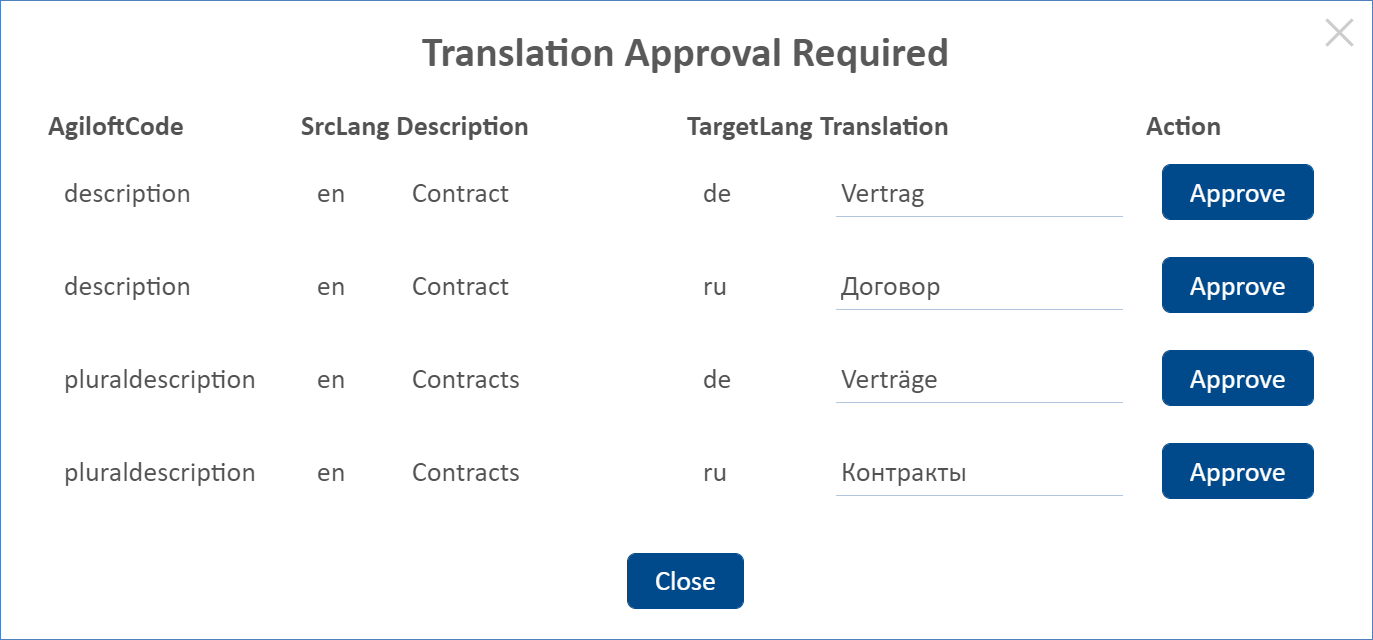Google Translate Integration
Use machine translation by Google Translate to speed up the process of translating your system and maintaining localized dictionaries. Integrating with Google Translate offers the following features:
- Translate entire tables into new languages
- Automatically translate new content into selected languages
- Review machine translations as new content is created, or later in a review workflow
Prerequisites
Setting Up Google Translate
To use any Google Translate features, you must first set up your integration:
- Click the Setup gear in the top-right corner and go to Integrations. Under Machine Translate Integration, click Configure.
- Under Google Cloud Platform Login, enter the API key for your Google Cloud account.
Select the languages you want to support with machine translation.
Select only the languages your users need. Selecting too many languages makes it more time-consuming to maintain all the dictionaries, and makes the language selection menu more cumbersome.
Under Auto-Translate New Text, choose one of the options to determine what the system does when new fields, charts, saved searches, and other entities are created:
- Automatically, for later approval in a workflow. This generates and saves a machine translation for the entity in each selected language, then saves the machine translation for later review in a dedicated approval workflow. This option works best if your organization has a few specific people who review and approve translations, but many people who create new entities.
Allow immediate user review and approval of translations. This presents machine translations to the user when the user creates a new entity, so the user can review the translations for their new entity immediately. For example, if an admin creates a new field named Name and clicks Finish to save it, the system presents suggested machine translations of "Name" into all the languages selected in step 3. The user reviews the translations, edits them as needed, and clicks Approve for each one. If there are translations the user can't review, they can skip editing or approving those languages and click Close, in which case the unapproved translations are stored with a status of Machine Translate for future review.
This option works best if your organization has a few specific people who create new entities, and the same people are responsible for reviewing and approving translations. This is also a good option if everyone who creates new entities is reasonably familiar with multiple languages.- Do not auto-translate as new text is added. If you select this option, new text is not machine translated until you decide to translate it using one of the options in the Setup > Localization menu.
- Set Dictionary Translation to enabled or disabled. Dictionary Translation allows you to translate an entire table to a new language using machine translation, as long as the new language is selected in this configuration menu.
Reviewing Machine Translations
When you set up your integration, you can choose to automatically translate new text as new entities are created. In either case, machine translations can be generated that need to be reviewed later.
To review translations:
- Go to Setup > Translation.
- On the Language tab, select the language whose translations you want to review. This drop-down menu lists only languages that are enabled in your Machine Translate integration configuration under Setup > Integrations.
- Select the status you want to review. You can review Machine Translate text, which has been generated by Google Translate and not approved by anyone, or Translation Approved content, which has received approval already.
- Click Next.
- On the Translate tab, review each translation. Make edits if necessary and then click Approve to save your translation in the Translation Approved status. If you're reviewing content that has already been approved, you can click Approve Again to save any changes you make.
Translating Tables to New Languages
If you want to add support for a new language by performing an initial translation using Google Translate, you can do so in Setup > Localization on the Translate tab. For more information, see Localization.

